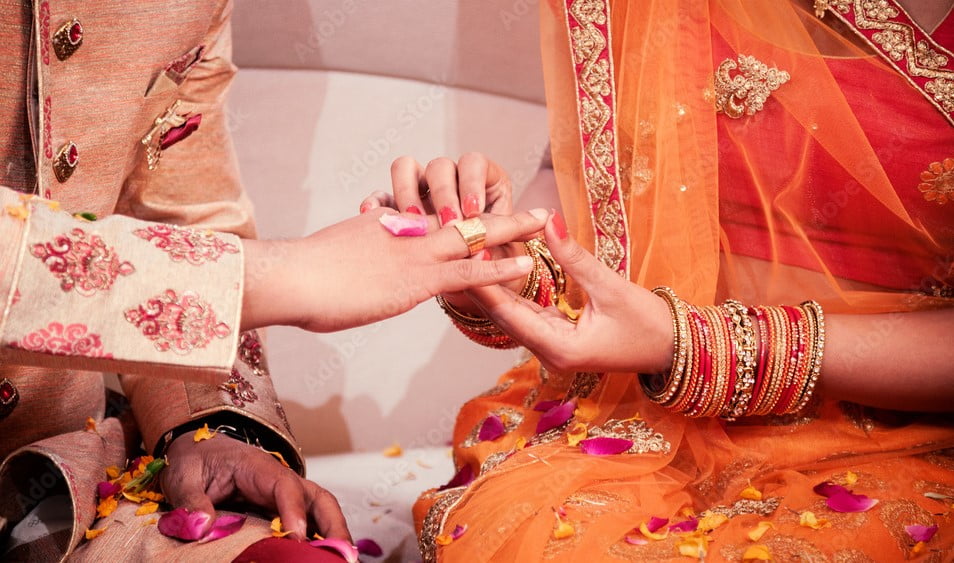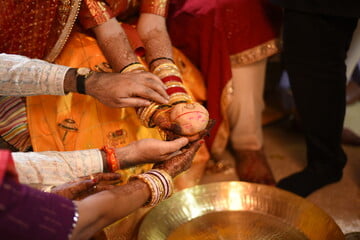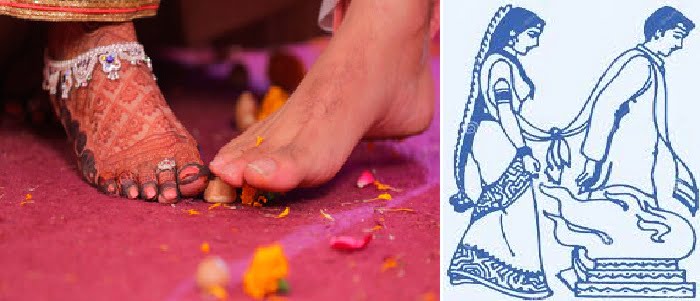In India, a wedding is not just the union of two individuals. It is more than that because it helps to strengthen the bond between two families. A sacred connotation is attached to the wedding ceremony, where several rituals contribute to the solemnizing of the marriage.

There is no doubt about the fact that Indian weddings are grandiose occasions that are associated with pomp and merrymaking. But it is also important to note the ancient and sacred marriage rituals bring two persons together to form the bond of holy matrimony.
Know The Meaning Behind Indian Marriage Rituals
Today, we will learn about the sacred Indian marriage rituals and their meanings. So, are you ready for it? Let’s have a look at the information below:
Engagement
The initiation of the marriage talks begins with an engagement. However, it is identified by varied names throughout India. Some refer to it as Roka, others as Ghor Dana, Sakhar Pudra, Nischayam, or Kasamdry, depending upon people’s cultural practices. It is a ring exchange ceremony that precedes the marriage.

Haldi
Haldi takes place on the day of the wedding in the morning. The relatives and family members of the bride and groom separately celebrate this event. In this event, the family applies turmeric paste to the face and body of the bride and groom. After the paste dries off, the bride and the groom bathe in the holy water.

According to Ayurveda and many scholars, Haldi or turmeric has healing properties. So, it is applied liberally to the bride and groom. Another reason behind this ceremony is that people think that turmeric can ward off negative energies.
Kanyadaan
Kanyadaan follows the custom where the bride’s father gives her hand to the groom. The bride’s father places the bride’s left hand on the groom’s right hand, chanting mantras or incantations invoking the forefathers to seek their blessings. This ritual is followed by the Panigrahana, where the groom accepts this responsibility and pays homage to the four deities, Bhagya, Aryama, Savita, and Purandhi.

Saptapadi
Saptapadi refers to the circumambulation around the holy fire. The couple takes seven pheras around the fire, and with each phera, they make promises. The the bride and groom make seven vows through this ritual and honor them for life.

Yajna
The Hindu marriage ceremony includes making offerings to the fire God or Agni Dev. It is also known as Homa and is considered a vital ritual that cements the marriage with the blessings of the Gods and Goddesses.

Conclusion
Hindu rituals have an in-depth meaning, which is why it is so relevant and purest even after thousands of years. What do you think?



